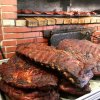Oh, recall can be so tricky! I just finished typing a response that was total nonsense because it mixed up my initial training at Pgh’s KAGC in ‘70-‘71 with my later training at NJ’s Trenton Robbinsville in ‘77 when I did my solo CC.
Anyway, the solo CC was definitely in ‘77 and the F4 was still the badass at the time (Randy Cunningham and all that). I’m guessing I recall F4s only because it was the hot fighter in the public’s mind at the time, sort of like the Spitfire and the Mustang tended to eclipse their more numerous stablemates.
But they were probably not F4s which were giant aircraft that tended to leave a memorable trail of smoke behind and I don’t remember that. The fighters seemed smallish and therefore very fast as they flew through my flight path and altitude. Fact is, I don’t have a clue except that it’s the only thing I remember about the flight in addition to remembering to play with the mixture and lean it out at altitude, something we rarely did during training.
The mind works in funny ways.
Sent from my iPad using Tapatalk Pro



